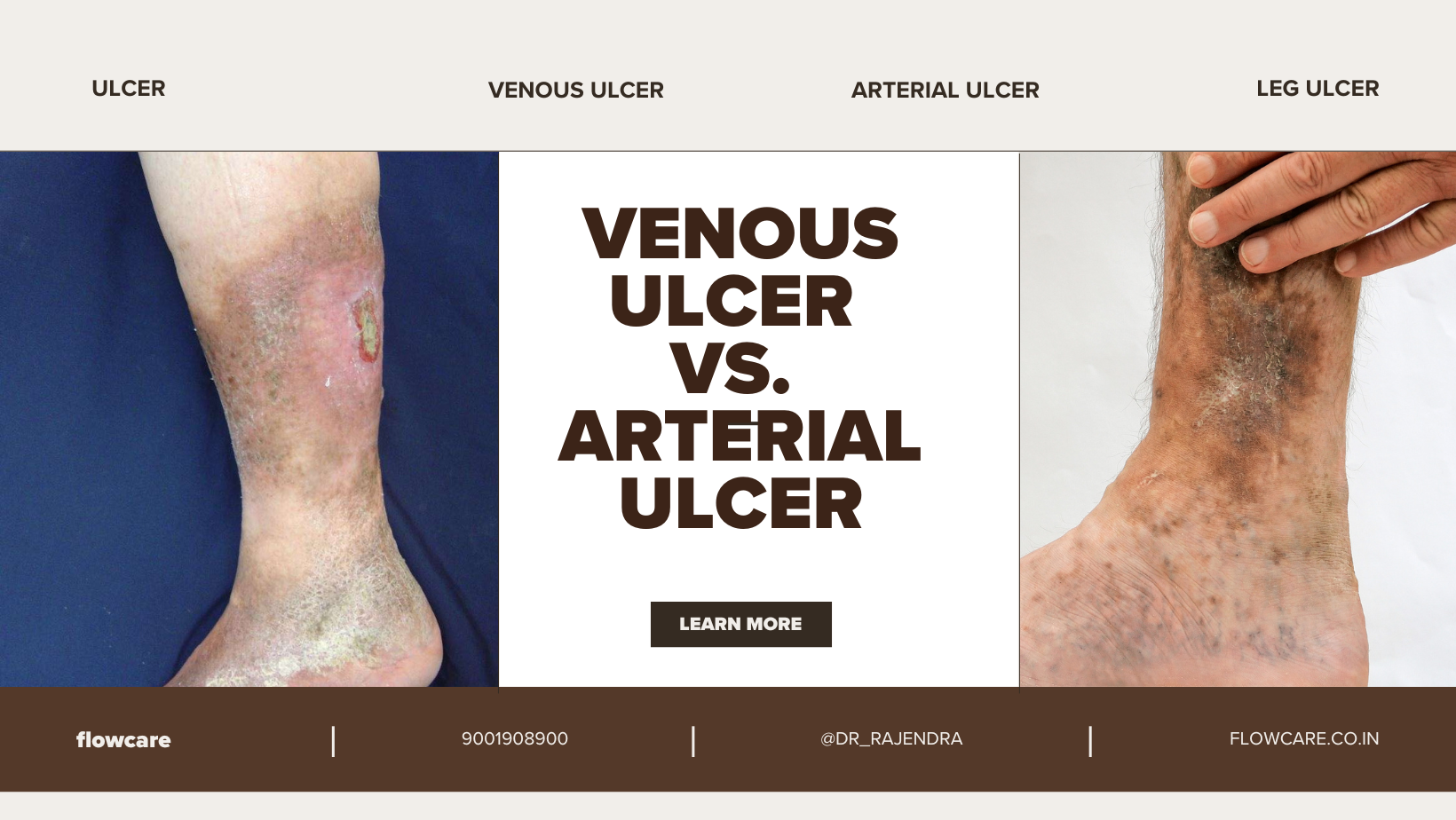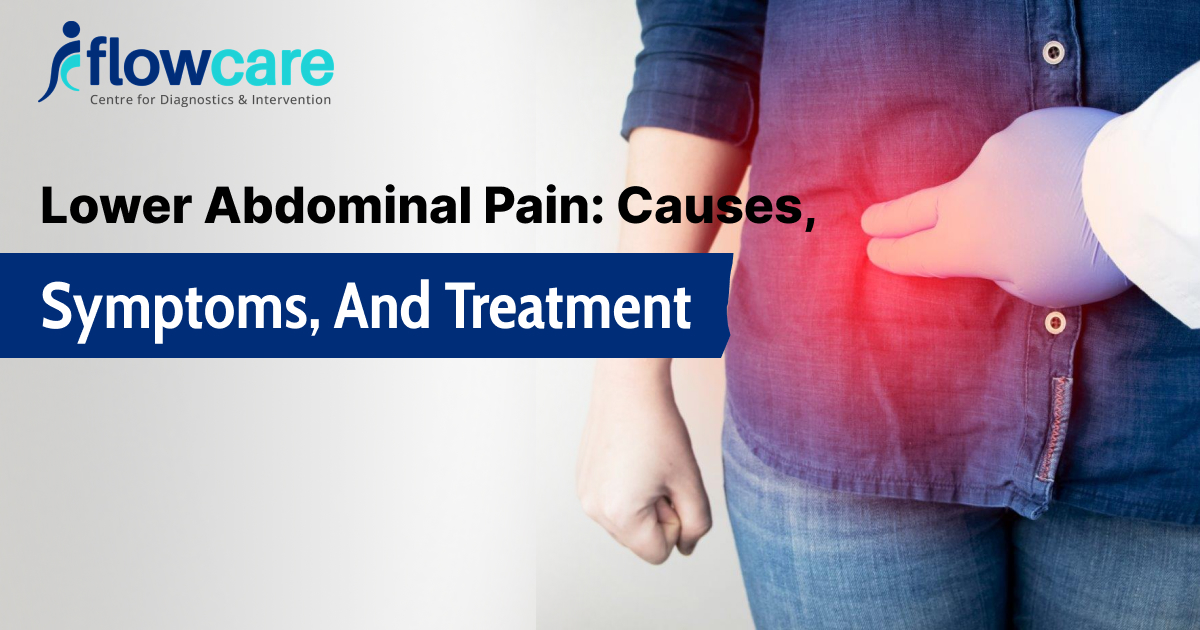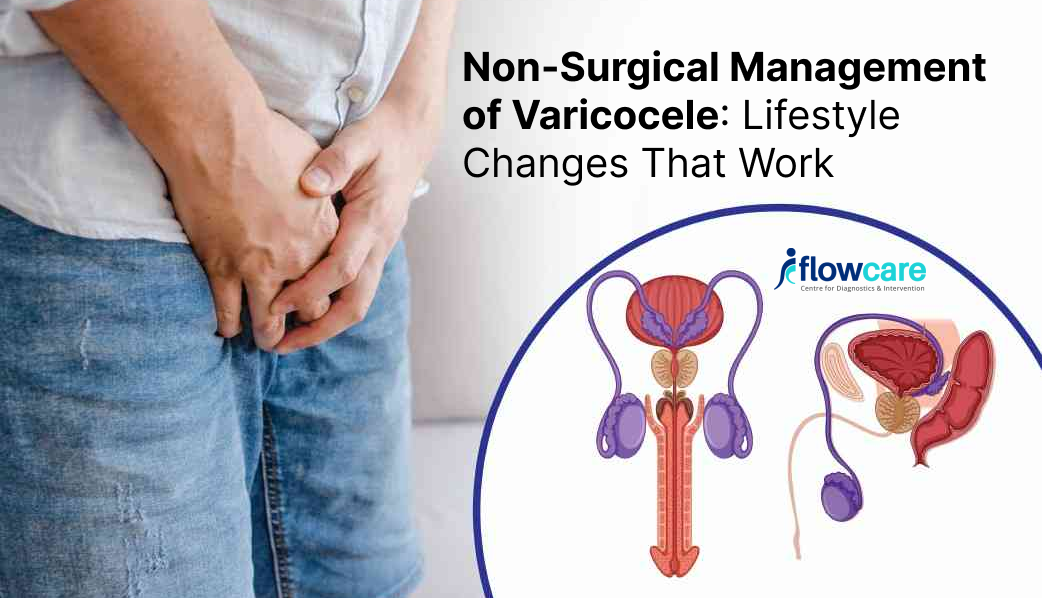
Venous Leg Ulcer vs. Arterial Ulcer: Differences, Symptoms, and Treatments with Dr. Rajendra Bansal
Leg ulcers cause pain and suffering, adversely affecting the quality of life in affected people. To get the best treatment, individuals must understand the distinction between venous leg ulcers and arterial ulcers. Today, we are going to discuss the differences in symptoms and treatments between these two types of ulcers.
What Are Venous Ulcers
Venous leg ulcers are sores that develop when the veins in your legs do not return blood to the heart as well. Blood starts pooling in the legs as a result of this inefficiency, which exerts increased pressure on the system and damages skin cells leading to the formation of an ulcer.
Symptoms of Venous Leg Ulcers
Location: This kind of ulcer appears around the medial aspect of lower legs, especially around medial malleolus.
Appearance: Venous ulcers are shallow, irregular margin shows hard and dark coloured skin around ulcer
Discomfort: The discomfort is usually low or they are not very painful unless they get infected.
Other Symptoms: Common symptoms include swelling in the legs.
Understanding Arterial Ulcers
Poor blood circulation in the arteries causes arterial ulcers, also known as ischemic ulcers. Due to inadequate blood supply, tissues can’t get the oxygen and nutrients leading to tissue death and ulcer formation.
Symptoms of Arterial Ulcers
Location: Usually located on the feet, heels, toes of legs
Presentation: The ulcers are round in shape, margins are regular , base is pale/yellow and skin may seem stiff and cold.
Pain – Arterial ulcers could be painful, especially during walking..
Other symptoms: The affected leg or foot may be cool to the touch, shiny skin and loss of hair.
Differences Between Venous and Arterial Ulcers
- Cause:
- Venous Ulcers- This ulcer is usually due to the inadequate return towards the heart from the veins.
- Arterial Ulcers: Poor blood supply to the legs from the heart.
- Location:
- Venous Ulcers: Occurs prominently on the lower leg and around the ankles.
- Arterial Ulcers: Prominently on the feet, toes and heels
- Appearance:
- Venous Ulcers: Occurs at irregular gaps with a red base.
- Arterial Ulcers: Well-defined, deep with a pale or yellow base.
- Pain:
- Venous Ulcers: Generally less painful unless infected.
- Arterial Ulcers: Very painful, especially during walkt.
Treatment Options
Treating Venous Leg Ulcers
- Compression Therapy: Compression is essential for treating venous leg ulcers, which can help blood flow and alleviate swelling.
- Wound care – Regular cleaning with pressure bandage helps in faster healing.
- Elevation – Raising the leg above the level of the heart to diminish swelling.
- Medications: These include antiinflammatory agents and antibiotics.
Treating Arterial Ulcers
- A better blood Flow: This can range from medicines to improve the flow of blood to surgical methods like angioplasty & bypass surgery that help restore a good healthy volume of oxygen-carrying vessels.
- Wound care: Clean and bandage the ulcer to prevent infection.
- Chronic Pain (Pain Management): Medications can work to relieve pain since arterial ulcers are extremely painful sometimes.
- Lifestyle Changes: Stop smoking, exercise, sugar control and antioxidant rich food will improve overall vascular health.
The Importance of Treatment and Diagnosis
Leg ulcers should be treated promptly and managed carefully to minimise complications such as infection since infections in leg ulcers can cause other health problems. Some patients may be misdiagnosed or not receive the appropriate treatment causing them to suffer unnecessarily and increasing overall healthcare costs. Hence identifying the nature of the ulcer is important and you must get medical advice based on it.
Expert specialists like Dr. Rajendra Bansal underscore the need for prompt diagnosis and treatment. Your chances of recovering from ulcers are better the earlier you identify and treat them. If you are suffering from the ulcer issue then Dr. Rajendra Bansal’s vast experience, knowledge and counsel would be of great assistance to you over the course of treatment. You can get all treatments at Flowcare under one roof, saving you time and hassle with lengthy procedures.
Conclusion
To sum up, the differences between both kinds of ulcers are significant for effective treatment. While venous ulcers are primarily treated with compression therapy and wound care, arterial ulcers require improved blood flow and pain management. By recognizing the symptoms and seeking timely medical intervention, individuals can manage these conditions effectively and improve their quality of life. For someone who is suffering from this issue, consult a healthcare professional for an accurate diagnosis and appropriate treatment plan.






